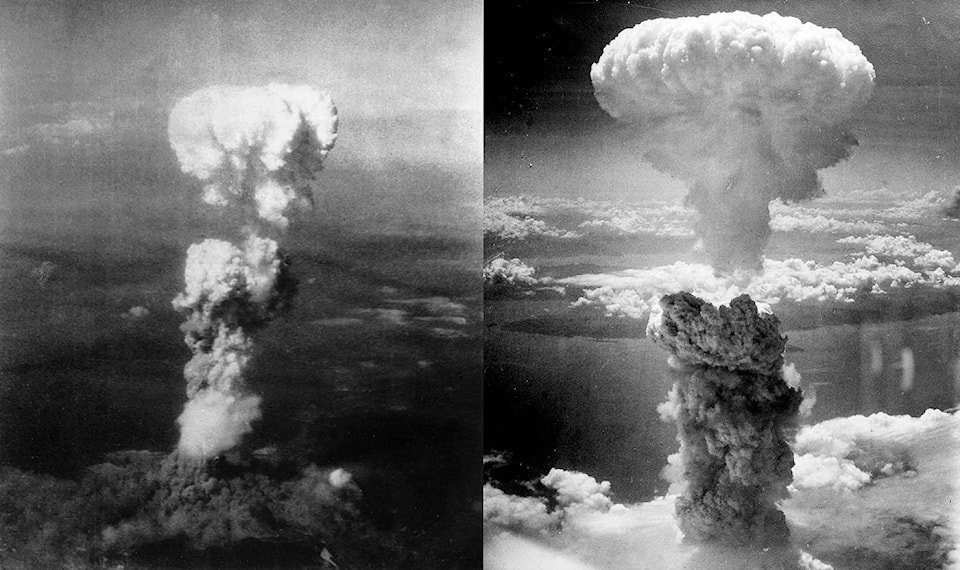The District of Oak Bay has proclaimed August 6 as Hiroshima Memorial Day and August 9 as Nagasaki Memorial Day, to remember the moments when both Japanese cities were razed by atomic bombs more than 70 years ago.
“I, Nils Jensen, Mayor of the District of Oak Bay, do hereby proclaim August 6, 2017 as Hiroshima Memorial day and August 9, 2017 as Nagasaki Memorial Day in Oak Bay, a day to remember the devastation of Hiroshima and Nagasaki in 1945 and to renew our commitment to ensuring freedom from the threat posed by nuclear weapons, here and everywhere.”
August 6, 1945 marked the beginning of the end of Japan’s war resistance during the Second World War and what became the world’s first nuclear attack, when the Enola Gay, a U.S. Air Force B-29 Stratofortress bomber, was tasked to drop an atomic bomb (codenamed Little Boy) on the Japanese city of Hiroshima. Described by survivors as “a noiseless flash” the weapon detonated just before hitting Hiroshima’s city centre, instantly vaporizing more than 100,000 people and killing thousands more, either right after the fact, or days, months and years later from radiation poisoning.
After Hiroshima, then-U.S. President Harry S. Truman warned that if Japan did not accept the terms of surrender, “they may expect a rain of ruin from the air, the like of which has never been seen on this Earth.”
Following no response from Japan, and only a mere three days later, on August 9, 1945, another American B-29 (called Bockscar) dropped a second atomic bomb, known as Fat Man, on Japan’s industrial city of Nagasaki, killing at least 74,000 people, either in the blast or from subsequent injuries.
Six days after Nagasaki, Japan finally announced its surrender, bringing the Second World War to an end.
Despite being scarred by death and destruction however, both cities began to build again. In 1955, Nagasaki-born sculptor Seibo Kitamura completed a 9.7-metre-tall bronze statue as a “symbol of oath for eternal peace of the world” located at the bomb’s detonation site in Nagasaki, now a peace memorial park. Japanese travel site jnto.go.jp said the statue’s right hand is raised upward to point to the threat of nuclear weapons, while the horizontally-extended left hand symbolizes peace. The statue’s “gently-closed eyes” are said to offer a prayer for the repose of the bomb victims’ souls.
But while the war memorials in Hiroshima and Nagasaki evoke peace, sadly the threat of nuclear destruction continues to loom over the Earth, as today’s nuclear arsenals are equal in their destructive power to more than one million Hiroshimas.
“And the peoples of the world will not be secure until the arms race is halted and threat of nuclear war eliminated,” Jensen wrote in his proclamation.
For Oak Bay Coun. Hazel Braithwaite, both days are an interesting time to reflect on what’s happened and what’s happening in the world today.
“Nuclear weapons are no longer solely in control by superpowers, and that makes the world a much more dangerous place to be in,” she said. “What we have to do is really emphasize the need for a more common understanding and accommodation from each other, because we don’t want a repeat of August 6 or August 9.”
